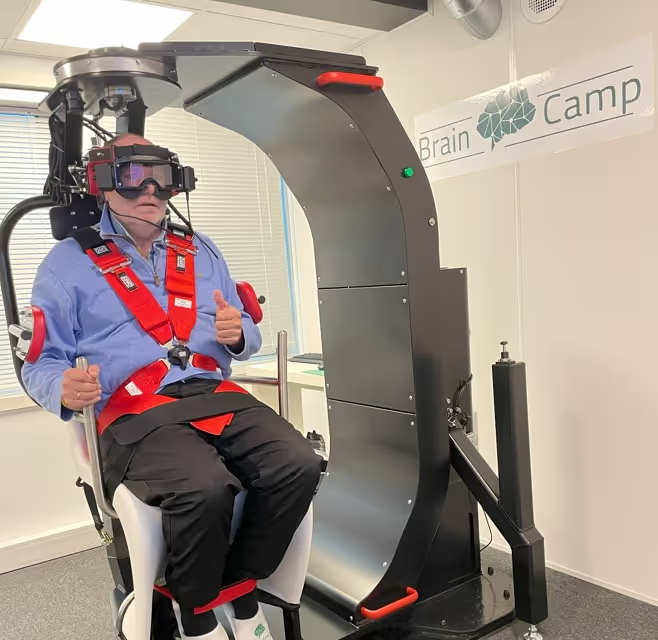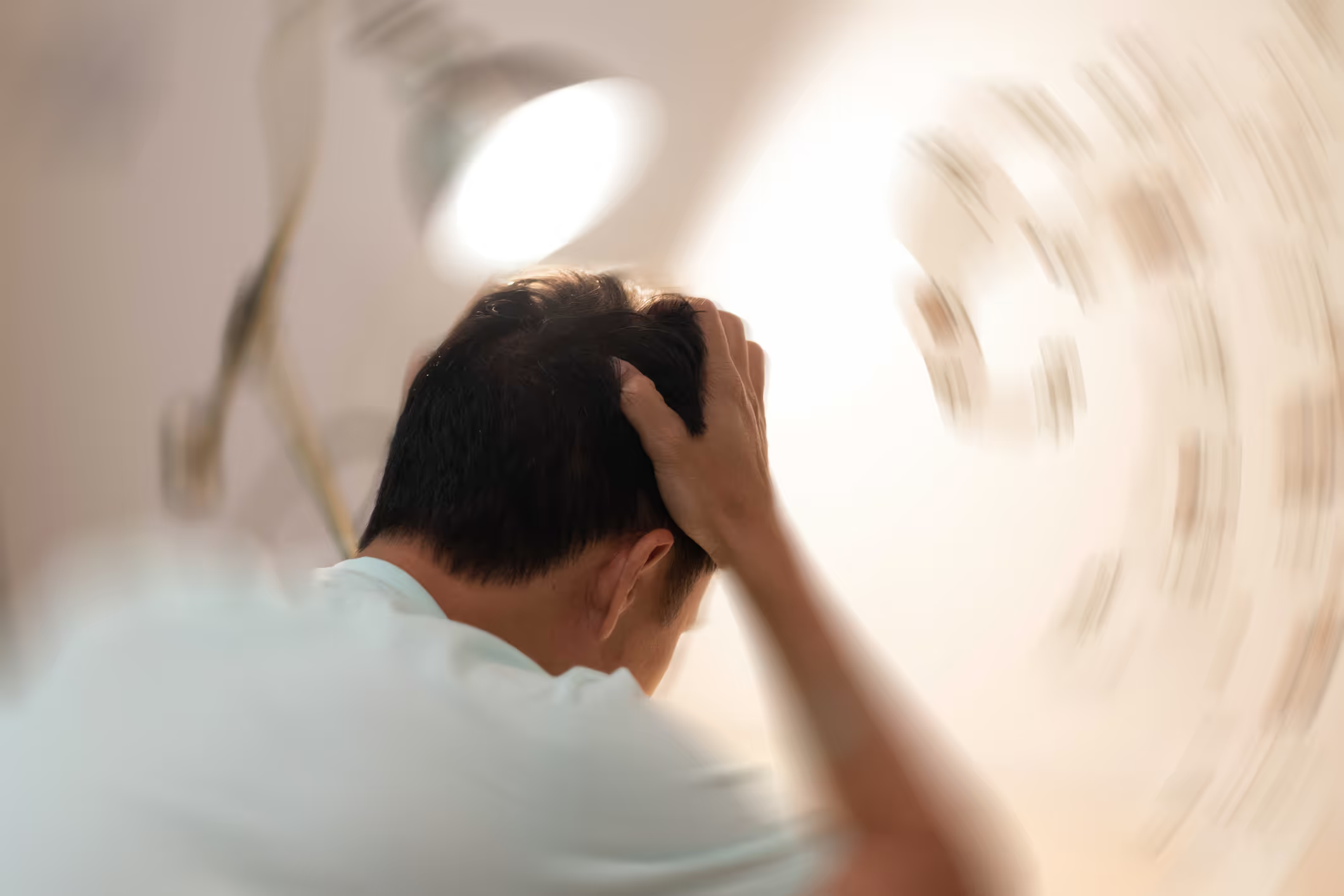Treatment of Positional Dizziness

-BPPV can cause the most intense dizziness, but is the easiest to treat.
BPPV, benign positional paroxysmal vertigo, is the most common cause of dizziness, and approximately 10% of the population will experience BPPV at some point in their lives. In Norway alone, more than 80,000 people are diagnosed with BPPV every year. The dizziness that follows BPPV can be very frightening and give an extremely intense sensation of rotatory dizziness, but is in most cases the easiest dizziness to treat using repositioning maneuvers.
Treatment of BPPV using a TRV chair can be significantly more effective than traditional repositioning methods. Especially for those who suffer from chronic BPPV and have frequent relapses, and for those who have BPPV in multiple archways. The risk of relapse is also reduced after treatment with the TRV chair.
In many cases, we have to combine treatment of BPPV with a TRV chair and home exercises. The patient is then thoroughly trained on how to perform the correct reduction maneuver. For BPPV in the posterior semicircular canal, we use the Semont maneuver. This exercise proves to be more effective than other home exercises for the posterior canal. This video demonstrates how the exercise can be done by yourself. It is very important that you do not perform the exercise yourself without being examined by a competent healthcare professional who can confirm that the exercise is done for the correct canal and that you stay in each position long enough.
Visit our Youtube channel for a demonstration of several repositioning maneuvers by clicking here.
Regardless of which repositioning maneuver you use, a thorough examination is essential to rule out other diseases and to identify the correct semicircular canal to treat. If you treat the wrong side or do the wrong maneuver, you can develop BPPV in several arch passages. We therefore offer patients where BPPV is suspected a targeted examination for BPPV that lasts about 60 minutes. This examination includes neurological examination to rule out serious disease, Dix-Hallpike test with video-oculography which is the standard test for BPPV, and tests for other types of positional dizziness. Video-oculography is an examination with a mask that has an infrared camera attached to analyze eye twitching, nystagmus, caused by BPPV. Video-oculography is important to better analyze which direction the nystagmus is moving in and how long the nystagmus lasts. This information tells us which archway has BPPV and what form of BPPV the patient has. This is essential, as the different archways and forms of BPPV require different repositioning maneuvers. As one of the few clinics in Europe, Brain Camp can offer examination and treatment of BPPV in the TRV Chair.
For patients who suffer from more complex dizziness syndromes in combination with BPPV, we can offer a comprehensive neurological examination lasting about 5 hours to map which parts of the balance and sensory system need neurological rehabilitation and how this rehabilitation should be tailored as best as possible. This examination includes, among other things, video nystagmography that analyzes purposeful eye movements to see how different parts of the brain and nervous system function, computer-based balance measurement, and tests that challenge different parts of the coordination system.
Watch a video demonstrating this comprehensive survey:


